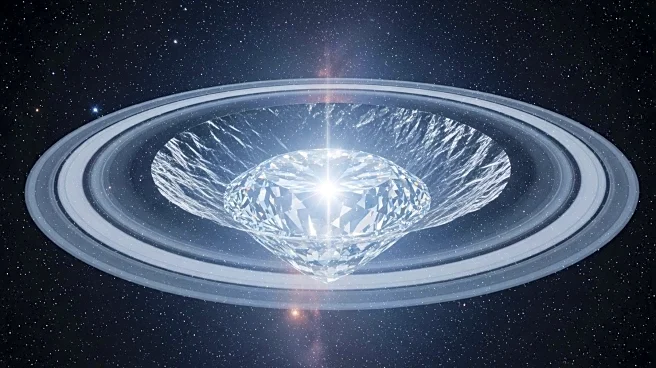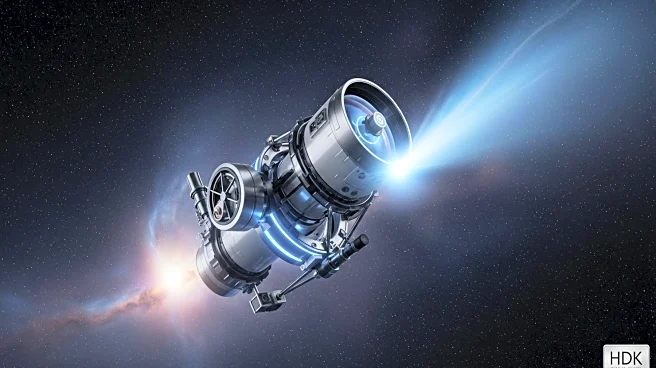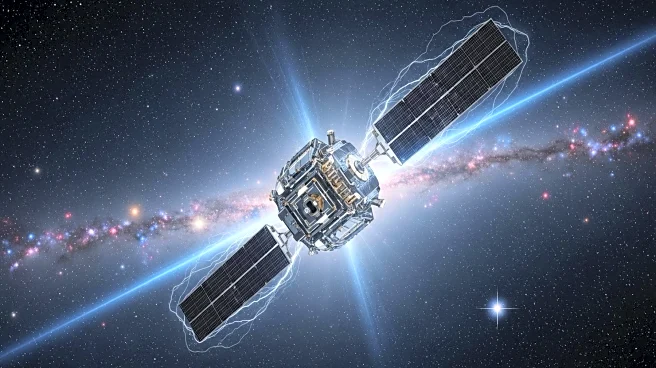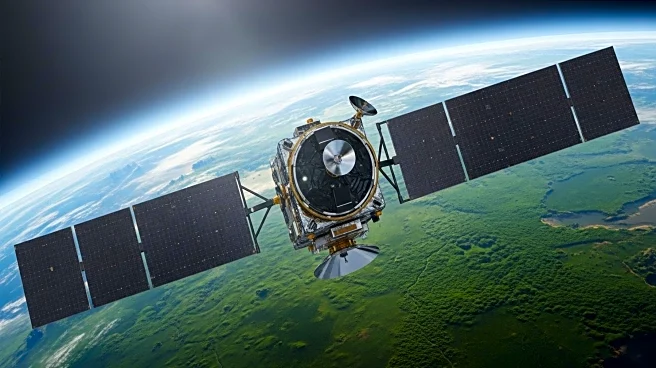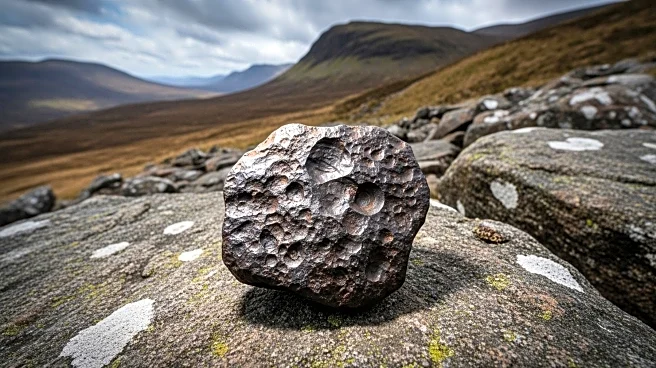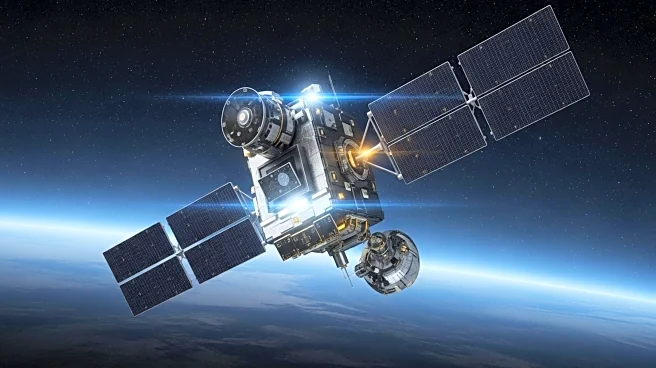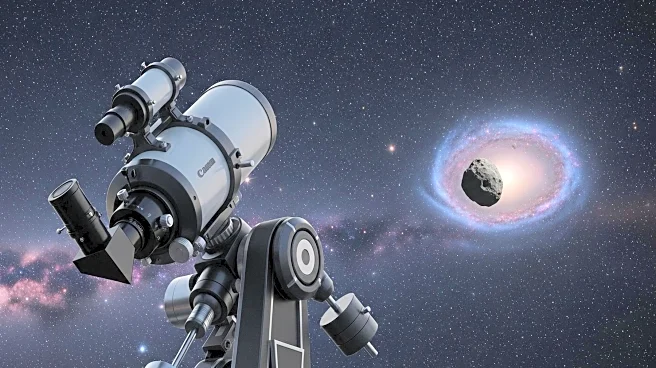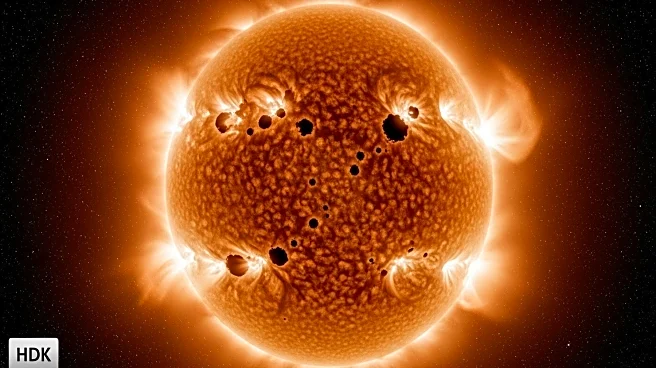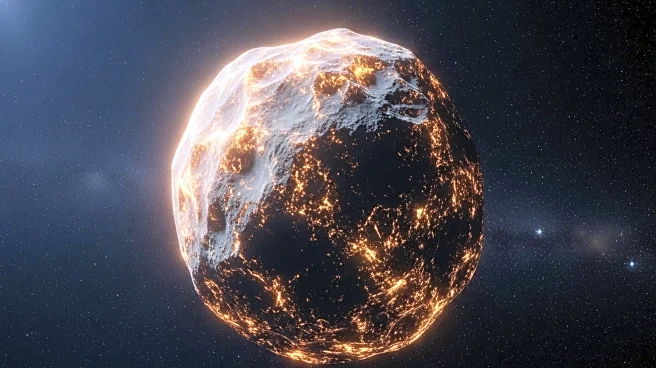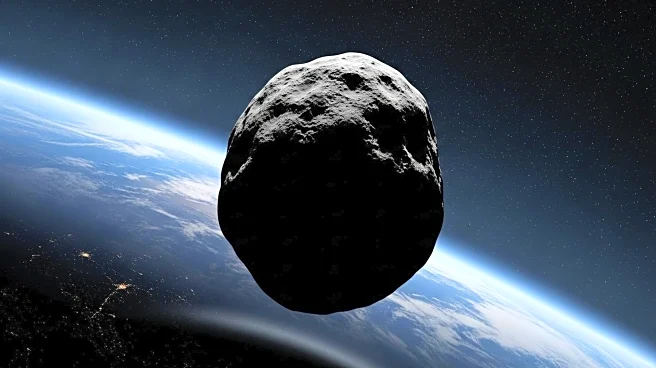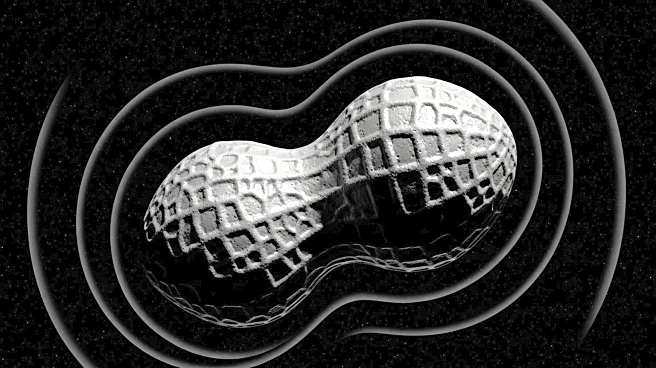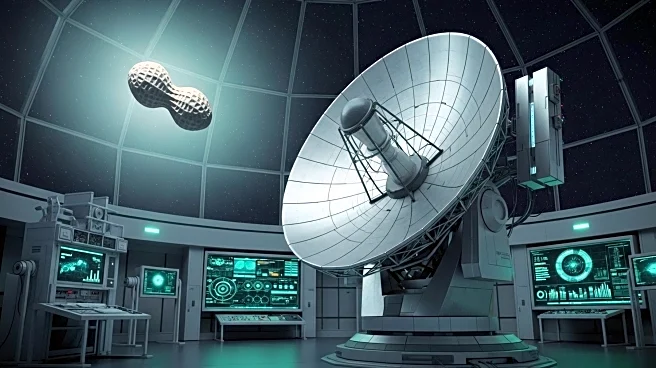What is the story about?
What's Happening?
Approximately 34 million years ago, a meteorite impact in Siberia created the Popigai crater, the fourth-largest known impact site on Earth. This event transformed graphite into industrial-quality diamonds due to extreme pressure. The impact is linked to the Eocene–Oligocene extinction event, marked by significant species loss, particularly among aquatic organisms. The debris from the impact possibly formed rings around Earth, influencing climate change. The Popigai crater remains a site of geological interest, designated as a UNESCO Geopark, and continues to be studied for insights into past mass extinctions and potential future impacts.
Why It's Important?
The study of the Popigai crater and its impact diamonds provides valuable information about Earth's geological history and the effects of meteorite impacts on climate and biodiversity. Understanding these ancient events can help scientists develop strategies to mitigate the effects of potential future impacts, which could threaten life on Earth. The research also highlights the interconnected nature of geological phenomena and their role in shaping Earth's ecosystems.
What's Next?
Ongoing research at the Popigai crater aims to uncover more details about the impact's role in historical climate shifts and extinctions. Scientists are exploring the potential risks of future meteorite impacts and developing strategies to protect Earth from similar catastrophic events. The findings may contribute to global efforts in planetary defense and impact mitigation.
Beyond the Headlines
The hypothesis that Earth once had Saturn-like rings due to meteorite impacts offers a fascinating perspective on the planet's history. This theory, while speculative, underscores the complexity of Earth's geological past and its influence on climate and biodiversity. It also raises questions about the frequency of such impacts and their long-term effects on planetary systems.
AI Generated Content
Do you find this article useful?
